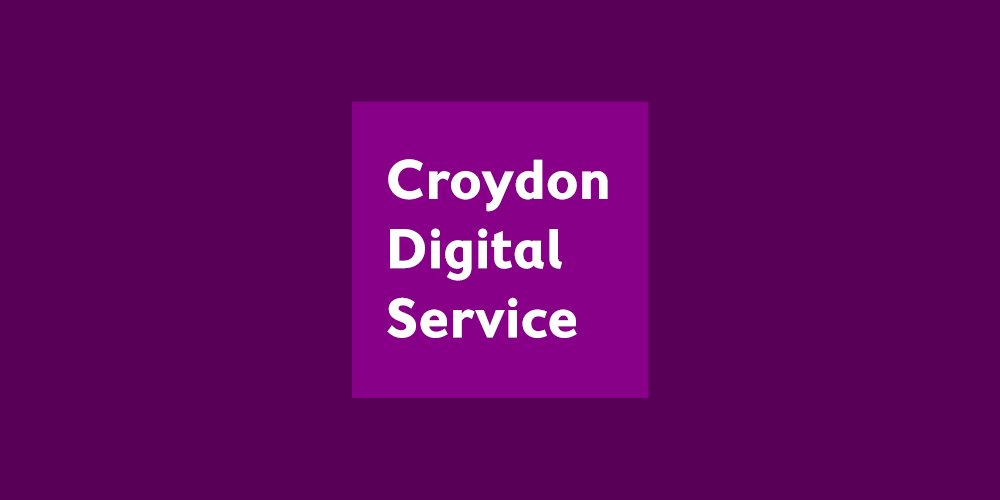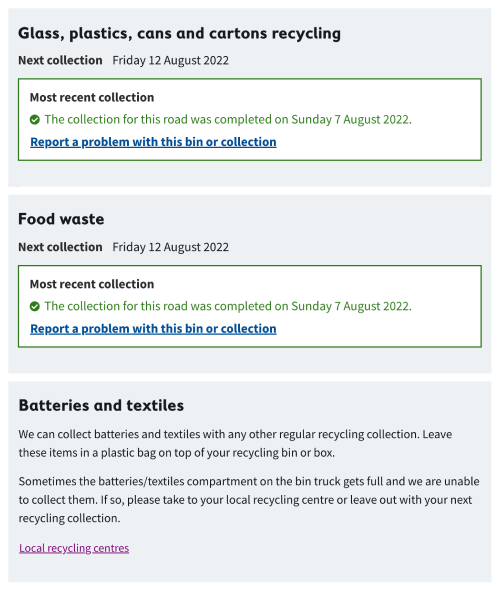From building control to bin replacements: putting user-centred design first
Croydon Council’s digital platform team has relished the chance to move on from Covid apps in the last 12 months.

It’s been a year since I wrote a blog post about Croydon Council’s digital platform team and our adventures in lowcode. Our biggest achievements back then were around the pandemic response, quickly building end-to-end services used by our residents and staff alike.
Since then, our chief digital officer and founder of Croydon Digital Service, Neil Williams, has moved on to pastures new (replaced by Paul Golland). Neil wrote this parting update on Croydon’s digital strategy, in which he highlighted the continuing need to offer more and better digital services to residents.
It’s fair to say we’ve responded to that challenge – the past 12 months have seen the following redesigned services go live:
- Dropped kerb and building control application processes: residents can now apply and make their application fee payment online, and council staff can process applications through a back office system
- Our bin-day look up service with downloadable collection calendars, for which users no longer have to create an account and log in
- Reporting missed bins or crew-related issues, placing bin orders and assisted bin collection requests. Coming soon: redesigned bulky waste collections and garden waste services
- A new customer relationship management (CRM) system, which is being piloted by a smaller number of council teams before being rolled out to the whole contact centre
To date, around 12,000 cases have been raised across the above new services in the last year, which has been building steadily as we’ve put more services live – more than half of those cases were raised just in the last month.
We also have up to 1,500 views a day on our bin-day look up service. It now takes just 5 seconds for the page to load the relevant information from our third-party waste services provider. This compares very favourably with the old platform, which took up to a minute for the page to load. Understandably, this delay drove complaints, as users thought the system was broken.

Screenshot from the old My Account bins section, which took a minute to load and featured inconsistent imagery, with confusing terminology and conflated user journeys. It also required users to create accounts and log in.
User research and design
While the core digital platform team consists of developers, technical lead, product manager and delivery manager, we work closely with colleagues in other disciplines, including user research, interaction design and content design.
We can only build services that we are confident are accessible, useful and usable as a result of following these established standards:
- Croydon Council’s online design and content guidelines. These are based on the GOV.UK design system, but incorporate Croydon’s look and feel, and adjustments to suit local authority services. The credit for this goes to members past and present of our website team. Their work has been shared widely through LocalGovDrupal, which means other councils have benefited from the work that went into these design templates.
- The digital platform team’s lowcode design guidelines, created by our interaction design team.
- Findings from our user research with residents. From collating the feedback submitted via the website and hearing from our contact centre staff, to conducting interviews with residents, through to watching them navigate the services we’re building and testing whether the forms are intuitive enough for the users to complete the task they set out to. The most interesting session included watching a resident navigate with a screenreader to look up his bin collection days and report a missed bin. By ensuring the service meets this user’s needs, everyone benefits.
Working and delivering remotely
The digital platform team is also on the receiving end of the business-as-usual requests that come from other council teams for a number of the existing platforms and services, so each day is a constant juggle of priorities. We try to keep things moving by identifying the minimum viable product that we can release in order to bring value to residents as quickly as possible, while continuing to work on them.
It’s hard to believe that, as a team, we’ve never all been in the same room together. We were put together when the council was in lockdown, and have worked remotely ever since. While some of us live near to the council buildings and enjoy going in to see other colleagues or for the odd in-person meeting, all our team collaboration takes place on Microsoft Teams. This flexibility has enabled us to recruit and retain skilled developers from further afield.
One of the features of Teams that has worked best for us is the use of channels within our team space. We have a separate channel for each service we are working on, plus extra channels such as one for our user research and design work. Related documents are easier to find as each channel (and therefore service) has its own files area and Wikipedia area.
We have a firm policy that development meetings are set up within those channels, which means that anyone in the team can see them happening and can join them even if not on the attendee list. This is our way of ensuring no one is accidentally left out, and collaboration – including pair programming – is both visible and expected.
Sharing learnings with other councils
A number of councils reached out to us after last year’s post, leading to some really interesting opportunities to talk about our lowcode journey.
We also participate in a monthly user meet-up with other councils who use the same lowcode platform that we do – Netcall’s Liberty Create.
If you would like to find out more, or would be interested in collaborating, please email me: victoria.hunt@croydon.gov.uk.



